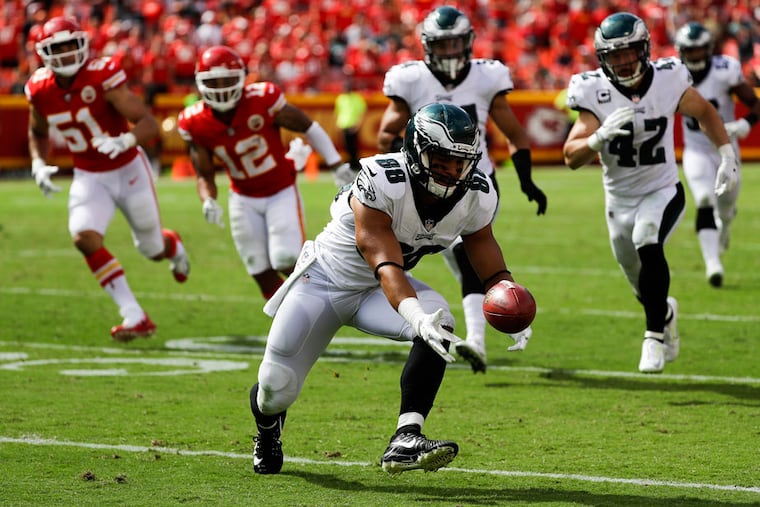Eagles’ onside kick proposal tabled for discussion, but NFL will allow an extra player to return from IR
The league is also giving kick and punt returners more protection from jarring hits.

NFL owners voted virtually on rules changes Thursday, and the longest discussion concerned the Eagles’ proposal to replace onside kicks with an untimed fourth-and-15 opportunity from the 25-yard-line, competition committee chair Rich McKay told a media conference call.
A long discussion isn’t necessarily good for getting something approved — it means people have lots of questions, and that opinions differ. After the measure failed to get the required 24 of 32 votes in an informal poll of the membership, it was tabled for further review. The same thing happened a year earlier, when Denver authored a similar proposal.
McKay said there was concern about making comebacks too easy; a team might get much-better field position after converting a fourth-and-15 play from the 25 than it would in recovering an onside kick from its 30. Theoretically, a team could score on such a play, or at least put itself in position to kick a game-winning field goal. That kind of gain would be quite rare with an onside kick.
McKay called the Eagles’ proposal “a pretty major change.”
A lot of people agree that the onside-kick process isn’t working well these days, but one problem with the proposed change is that the NFL has seen some hastily adopted rules changes not go smoothly in recent years, as witnessed by last season’s short-lived attempt to make pass interference reviewable. NFL vice president of football operations Troy Vincent told a media conference call Thursday that the competition committee has learned not to rush changes.
The success of onside kicks fell dramatically following a rule change two years ago aimed at decreasing concussions. The players flanking the kicker can no longer get a running start. Successful conversions have occurred just 10.5% of the time since the change, compared to 16.3% over the five prior seasons. NFL Network reporter Judy Battista noted that over the last 10 years, teams have converted fourth-and-15 26.7% of the time.
The league moved less cautiously in other areas, however:
This season, teams will have three slots for activating players who were placed on injured reserve, instead of two.
A fairly arcane Eagles proposal was adopted: When a scoring play is negated by a penalty, there will still be a review to determine whether the player scored. This might be relevant when the play came on fourth down, and it turned out that the player didn’t score after all. The defense would then take the play and the ball rather than giving the opponent another chance to score after the penalty was assessed. This applies to conversions, where the defense would always want to take the play rather than the penalty, when it turns out the offense didn’t score.
In another attempt to curtail concussions, kick and punt returners must be given time to ward off impending contact before they are hit.
Teams no longer can commit multiple dead-ball fouls with the clock running, as the Patriots and Titans have done before punting, while protecting leads.
Though two proposals to institute a replay “sky judge” in each NFL stadium were withdrawn, the league will use such a person in the preseason, not to overrule the officials on the field, but to relay “objective information” to them from above.